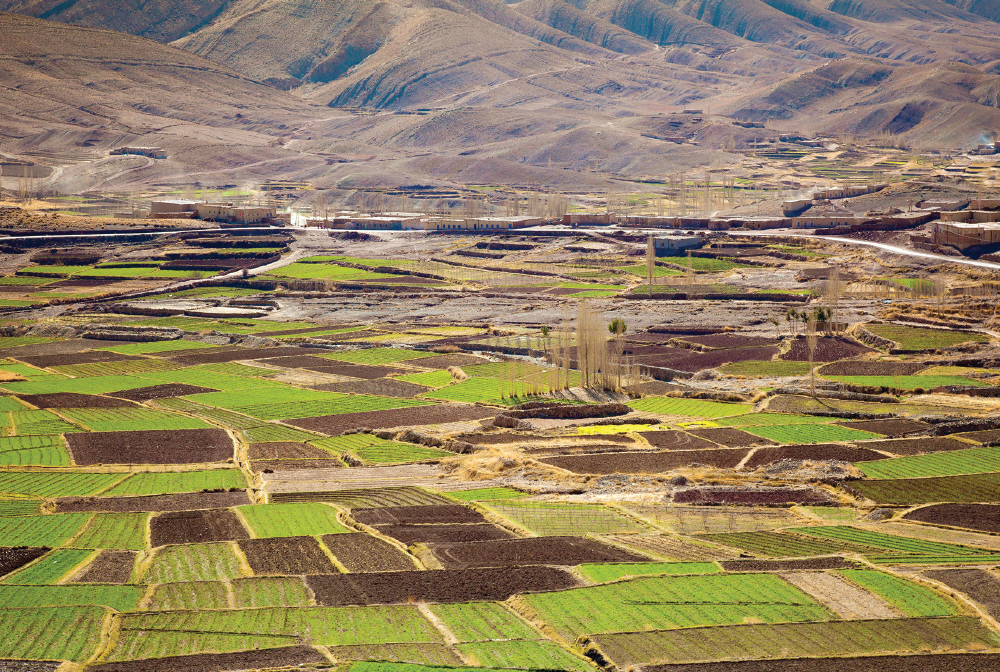
19 Jul Agricultural resilience
Young people and adapting to climate change are key to agriculture’s future sustainability
With over 33% of Moroccan citizens living in rural areas and around 80% of that population relying on agriculture for their economic survival, development of a sector that contributes around 15% of gross domestic product has long been a national priority.
In 2008, King Mohammed VI took the decision to launch a strategy to turn agriculture into a real driving force for the country’s social and economic advance: the Green Morocco Plan. “The plan provided a new integrated vision for agricultural policy that considered the sustainability of the sector as a whole: all the diverse stakeholders, whether large, medium or small, had to be pushed forward on the path of the sector’s development,” explains Mohamed Sadiki, Minister of Agriculture, Maritime Fisheries, Rural Development and Water and Forests.

Mohamed Sadiki
Minister of Agriculture, Maritime Fisheries, Rural Development and Water and Forests
Backed by public-sector financing and incentives for private-sector investments, the strategy paid dividends. The industry was restructured, modernized and the resultant productivity gains meant that, 10 years after it was introduced, the revenues generated by Moroccan agricultural exports had risen from $1.4 billion a year to $3.2 billion.
To build on that success, in 2020 the government introduced a revised 10-year plan that takes into account challenges the country and world are now facing, says Sadiki: “The strategy is called Generation Green. The word generation indicates that we are giving priority to human development, while the word green relates to the second pillar, which is sustainability and the resilience of the sector to climate change and other external factors.”
Goals of the strategy under the first pillar include boosting the incomes and social protection of rural agricultural workers and farmers, plus encouraging more young people into the sector who can further modernize it. “The objective is to attract almost 180,000 young entrepreneurs to the production ecosystem and 170,000 to agricultural services by 2030. We are also looking to create more agricultural cooperatives, aggregations and economic interest groups,” he states.
To achieve these aims, the government is investing to provide the sector with technical support and advice, digital services and training. In addition to young agriculturalists, another focus is nurturing the many women in the industry, the minister adds: “We have specific financial tools and support programs for women and women’s cooperatives, particularly in the area of promoting local products, such as argan and olive oil, roses and saffron.
When it comes to boosting sustainability and resilience, the government is working along several axes. First, it wants to improve product distribution and wholesale marketing, and to dramatically increase the size and added-value levels of its agri-processing industry.
The second key axis concerns adaptation to climate change and particularly Morocco’s vulnerability to drought. “Our agriculture is essentially based on irrigation and we are trying to access more land for large-scale irrigation from dams. We are also transforming our irrigation systems to more modern ones that save water with state subsidies. We are three years into the program and now have 750,000 hectares of agricultural land that are utilizing drip-fed irrigation, our objective is to reach 1 million hectares by 2030 and I am sure we will exceed that because we are moving fast,” he reveals.
Morocco is also working to mobilize new sources of water through, for instance, wastewater recycling and large-scale desalination. “We have 3,500 kilometers of coastline and have already implemented a facility in Agadir that is irrigating 15,000 hectares with desalinated water. And we have a new model project underway in Dakhla in southern Morocco that combines desalinated water, green energy from wind power and agricultural production,” Sadiki says. Further measures include cultivating species of high added-value crops that are more resistant to drought, as well as diseases.
Morocco’s plans for its agricultural sector open up a range of opportunities for US investors. For instance, he notes, “Our irrigation projects will be public-private partnerships and we would like to develop partnerships with US companies in areas like logistics, distribution and wholesale markets. There are also opportunities in fishing, aquaculture, forestry, green energy and hydrogen. I invite US companies to come here, they can be assured that they will always be well received.”
